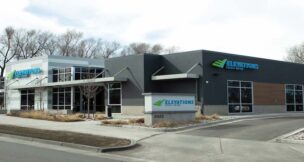Best practices for Paycheck Protection Program documentation


Best practices for Paycheck Protection Program documentation
Small businesses and other eligible organizations are starting to receive or have already received their Paycheck Protection Program (PPP) funding and are likely turning their attention to the next phase—loan forgiveness.
Organizations that start planning now may face less stress when their eight-week covered period ends and it is time to request forgiveness of the proceeds. Here are some best practices you can implement now to help your business run efficiently, ease employee stress and track how you spend PPP funds:
- Create separate general ledger accounts. Structure different general ledger accounts to make them easily identifiable, and only record transactions that are considered covered expenses to these accounts. Examples include “Utilities-PPP” or “Internet-PPP.” Group them with their natural classification of accounts.
- Input new payroll time codes. Set up new payroll time codes to track wages paid for your covered period and be able to differentiate between PPP wages and those eligible for other incentives.
- Maintain proper documentation. Keep invoices from vendors of eligible expenses and payroll records. Consider making copies or creating a folder on a computer to store them all in for easy reference to send to your PPP provider with your forgiveness application.
- Monitor expenses. Only 25% of your PPP funding can be used for utilities, rent and covered mortgage interest payments. It is important to monitor your spending during this eight-week period to help receive the most of your loan forgiveness. This will allow you to adjust as necessary.
- Track payroll costs and employee count. A key provision in the debt forgiveness is to maintain the same number of employees and a salary threshold within 25% of prior years (applicable to employees with an annualized salary of $100,000 or less). Remember, if you are receiving tax credits for payroll costs through other programs, those costs are not eligible for the use of PPP funds.
- Estimate expenses. Know your eight-week period and determine what you expect to pay in those eight weeks. Since current guidance states that costs must be incurred and paid during the eight-week covered period, consider if it is important to shift expenses and modify the timing of other traditional expenses to take full advantage of forgiveness and use of your proceeds.
- Consider using a separate bank account. Several loan providers have offered to set up new bank accounts to deposit the funds into, allowing only the PPP funds to be deposited into the account and only eligible expenses to be paid out of it. This is not mandatory and may not be viable for everyone—and it may be difficult to get checks in a short period—but is still a great option for some.
Finally, upon completion of your eight-week covered period, it is your responsibility as the borrower to apply with your PPP lender to request loan forgiveness. The application will include documentation verifying employee counts; payroll reports showing payroll costs paid, payroll tax filings, state income or unemployment reports; documentation for expenses like rent, utilities and interest payments, such as canceled checks, payment receipts, transcripts of accounts, utility bills or email confirmations; self-certification that the information provided is true and correct; and documentation showing the funds obtained were used to retain employees and pay for covered expenses.
As with most topics related to COVID-19, changes are being made rapidly. Please note that this information is current as of the date of May 13.
(This sponsored content was provided by BKD.)













